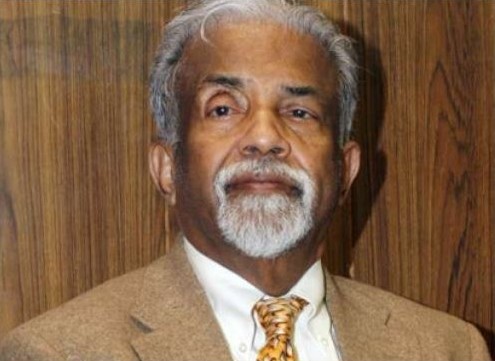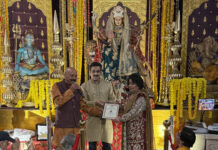
Prakash M Swamy
HOUSTON: Tributes were paid to the memory of distinguished scientist Dr ECG Sudarshan at a gathering of the University of Texas Professor’s friends and family in Chinmaya Mission, Austin, Texas on October 27.
The gathering was to celebrate the life of Dr. ECG Sudarshan who passed away on May 14 this year. Sudarshan was India’s best known theoretical physicist, who was professor emeritus at University of Texas at Austin.
Dr Sudarshan’s long term associates and colleagues spoke about his humor, wit and deep knowledge of particle physics. Dr. Roger M Walser, his colleague, said that two of Sudarshan’s discoveries, V-A theory of weak interactions and the use of coherent state representation in optics were attributed as work by others and they were awarded Physics noble prize instead of Sudarshan.
ECG Sudarshan graduate Fellowship in Physics is being planned at the University of Texas Physics Department and the details will be available soon.
Sam Kannappan, long time friend of Sudarshan and founder of Meenakshi Temple in Houston, said he met him in 1969 and Sudarshan became a Founder Trustee of Houston Sri Meenakshi temple. He presented the letter of appreciation from Chairman of the temple Dr. Padmini Ranganathan to Mrs. Bhamathi Sudarshan, widow of the scientist.
His son Ashok was the master of ceremony.
Sudarshan was born in Kottayam, Kerala in 1931. He studied at CMS College in his hometown before attending the University of Madras and later the Tata Institute of Fundamental Research. He later studied and taught at the University of Rochester and then at the University of Texas at Austin, where he taught for over 40 years. He was honored with several prestigious awards like ICTP Dirac Medal, Padma Vibhushan, Padma Bhushan, Majorana Prize, TWAS Prize, Bose Award (1977) and C V Raman Award (1970).
Sudarshan was passed over for the Physics Nobel Prize on more than one occasion, leading to controversy in 2005 when several physicists wrote to the Swedish Academy, protesting that Sudarshan should have been awarded a share of the Prize for the Sudarshan diagonal representation (also known as Sudarshan–Glauber representation) in quantum optics, for which Roy J Glauber won his share of the prize.







